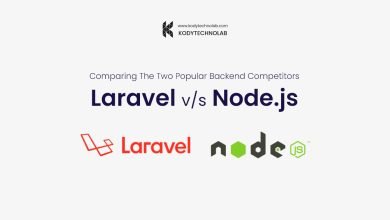
How Artificial Intelligence Is Helping To Personalize Mobile Apps
Artificial intelligence (AI) has become a popular buzzword in recent years across a variety of businesses. Global spending on AI systems is expected to rise from $35.8 billion in 2019 to $79.2 billion in 2022, according to the International Data Corporation. Users will see they progessively integrate AI into more and more products and applications as prominent tech businesses continue to demonstrate interest in investing in the technology. While AI has seen useful modifications in the healthcare, education, and finance sectors, one of the most promising areas for AI is the mobile app development industry. (mobile app)
The concept of having a personal assistant to assist with daily duties is enticing users all around the world. Smart apps, on the other hand, have significantly more potential than digital assistants. AI is now being used in mobile applications to substantially boost customer pleasure.
This article will provide a high-level overview of shifting user demands and AI’s utilisation in mobile apps.
What Is Artificial Intelligence and How Does It Work? (mobile app)
In its most basic form, AI is a machine that can mimic intelligent behaviour and make decisions on its own. Technology is an area of computer science that allows computers to perform tasks that would normally need human intelligence, such as situational or environmental analysis, problem-solving, reasoning, learning, and language comprehension.
Computer vision, natural language, virtual assistants, robotic process automation, and advanced machine learning are the five major areas that the McKinsey Global Institute divides AI into. According to the research institute, by 2030, 70% of businesses will have implemented at least one of the AI technologies listed above.
The possibilities for AI are boundless, but we can embed it in chatbots or context-aware sensors in the context of mobile. Many businesses have already started to develop scalable AI strategies aimed at providing value to their consumers.
More personalised experiences are being demanded by users. (mobile app)
With the advancement of AI technology, mobile users can now completely reorient the value standard of their existing user experience. Users are starting to anticipate more tailored and in-depth mobile app performance.
Retailers such as Starbucks, Tommy Hilfiger, and Nike may provide personalised experiences with recommendations tailored to each user by collecting and analysing customer data based on purchases and locations.
“The next round of applications will be a lot more intuitive and dynamic,” says Sanjay Malhotra, co-founder and CTO of Clearbridge Mobile. The mobile experience must be tailored and customised, and what I’m seeing now is that integrating AI and big data is making it easier and easier to create those truly individualised experiences.”
Moreover..
This is already evident in items such as Tommy Hilfiger’s chatbot. Users can utilise the chatbot to peruse their most current collections. Similarly, users can use it to receive a behind-the-scenes look at a recent fashion presentation. The chatbot use natural language processing to provide style advise and product recommendations in addition to responding to client enquiries. The bot obtains information about the user’s style preferences by asking a series of questions and then suggests an outfit based on the information.
Smartphones have GPS tracking, as well as microphone and camera capabilities, making them a great platform for AI applications. Apple also revealed that the iPhone XS, XS Max, and XR will come with an A12 Bionic CPU with a neural engine that will let the iPhone XS, XS Max, and XR to use AI hardware in previously unimaginable ways. Apps become more relevant and personalised when they combine AI technology with these built-in capabilities. Each app session will be more valuable than the last if we use AI to contextualise user behaviour.
Alexa, Amazon’s digital assistant, is setting new benchmarks.
Amazon has a leg up on the competition when it comes to voice-controlled assistants. Google is working to become more compatible with more things. Amazon’s Alexa already works with a wide range of devices, including appliances.
“Mobile and voice control will blend into a terrific user experience that will lessen the number of pain points consumers have,” Sanjay Malhotra adds. Instead of asking consumers what they should do, smart home gadgets will do what they suppose to do.”
Voice interfaces allow users to engage with programmes using natural language in a seamless and intuitive manner. Users expect more than simply speech recognition; they want a variety of utility features like predictive texting and context-aware computing.
In terms of predictive and contextual computing, Google Home shines. Google Assistant can answer more question than Alexa-enabled devices. Amazon, on the other hand, has a much larger developer community on their side. Third-party developers and device makers can easily integrate Alexa skills into a variety of applications.
Alexa Is Bringing Artificial Intelligence To Your Phone
Alexa has carved out her own niche in the industry and is crushing the competition. In contrast to her competition, Amazon launched Alexa in the home and is now moving her outside. Ford has partnered with Amazon to integrate Alexa into its vehicles. The agreement allows Ford SYNC 3 users to use Alexa to check the weather. Besides, they also allow to listen to audiobooks, add items to shopping lists. Moreover, they can even control Alexa-enabled home devices from within the car.
Alexa has grown into a leading new digital platform with the potential to become a fundamental part of our daily lives thanks to strategic partnerships. This strategic decision demonstrates Amazon’s dedication to personalising the user experience. They did it by allowing users to take Alexa with them wherever they go. More AI technology will be integrated into mobile apps, personalising and optimising the user experience.



